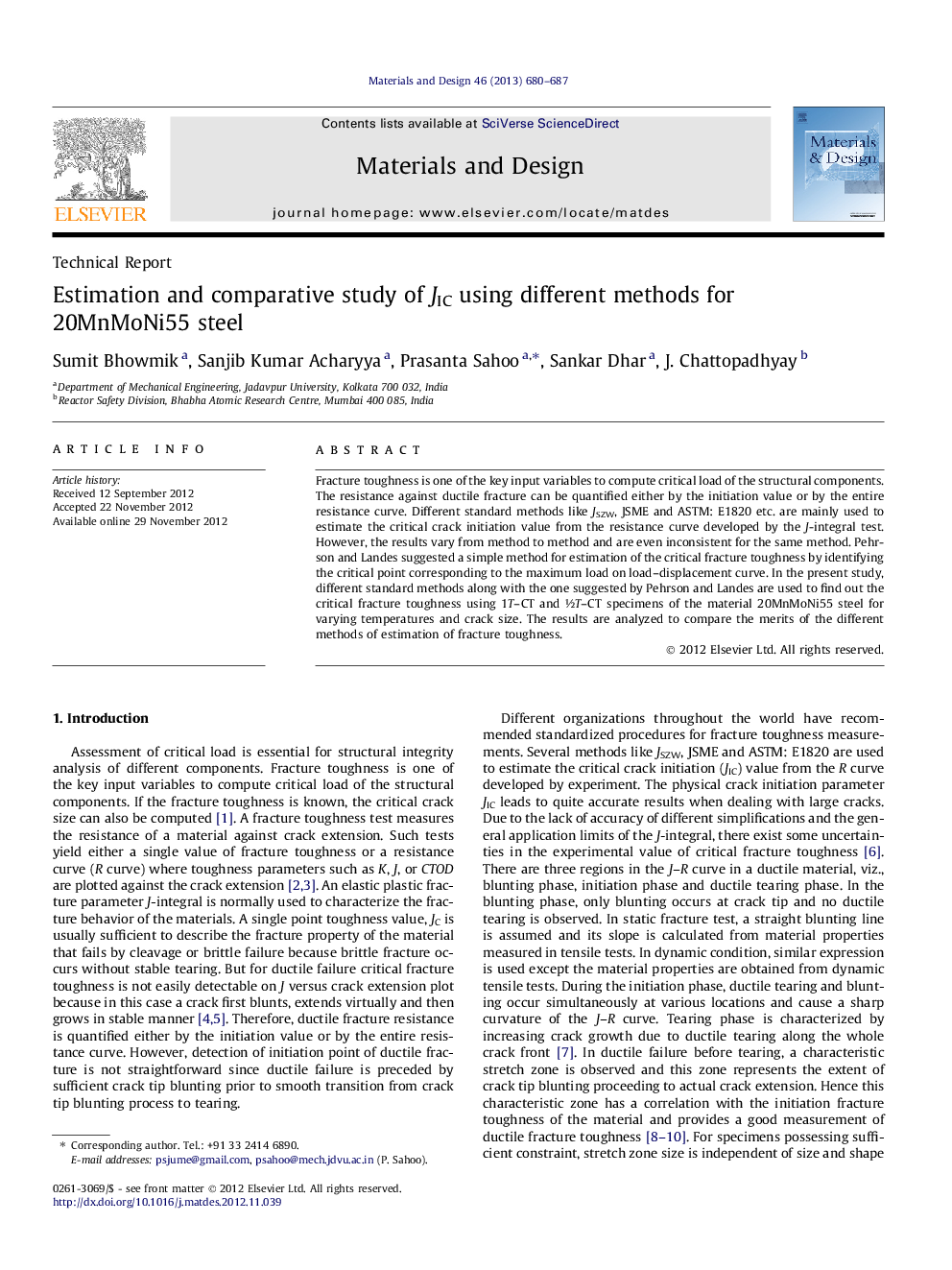| Article ID | Journal | Published Year | Pages | File Type |
|---|---|---|---|---|
| 830197 | Materials & Design (1980-2015) | 2013 | 8 Pages |
Fracture toughness is one of the key input variables to compute critical load of the structural components. The resistance against ductile fracture can be quantified either by the initiation value or by the entire resistance curve. Different standard methods like JSZW, JSME and ASTM: E1820 etc. are mainly used to estimate the critical crack initiation value from the resistance curve developed by the J-integral test. However, the results vary from method to method and are even inconsistent for the same method. Pehrson and Landes suggested a simple method for estimation of the critical fracture toughness by identifying the critical point corresponding to the maximum load on load–displacement curve. In the present study, different standard methods along with the one suggested by Pehrson and Landes are used to find out the critical fracture toughness using 1T–CT and ½T–CT specimens of the material 20MnMoNi55 steel for varying temperatures and crack size. The results are analyzed to compare the merits of the different methods of estimation of fracture toughness.
► Fracture toughness for ductile failure of 20MnMoNi55 steel is estimated. ► Fracture toughness is estimated for both 1T–CT and ½T–CT specimens. ► Comparison of different standards – JSZW, JSME, ASTM: E1820 and Pehrson–Landes method is made. ► Effects of a/W ratio, thickness and temperature on ductile failure are studied.
